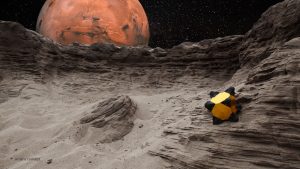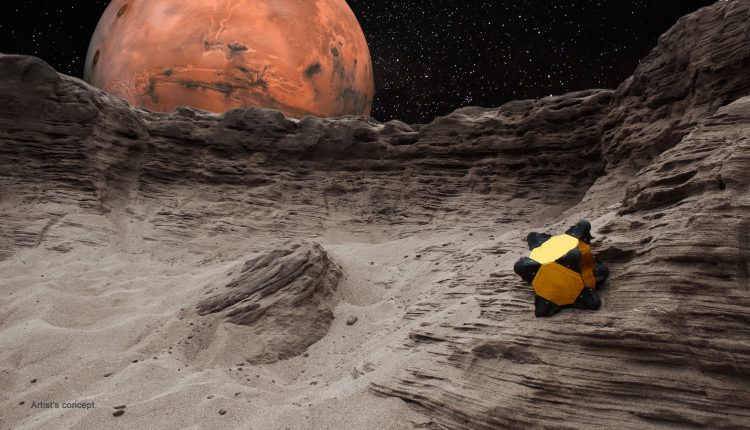While we don’t see Curiosity hopping and tumbling around Mars, NASA is working on an exploratory robot capable of some acrobatic maneuvers.
A team of researchers from NASA’s Jet Propulsion Laboratory in Pasadena, California, along with teams from Stanford University and the Massachusetts Institute of Technology are working to develop a robot that can explore asteroids and comets where low-gravity conditions and rough surfaces would be a bit dangerous for a traditional rover on wheels like Curiosity.
The concept robot, named Hedgehog, is cube-shaped and would hop and tumble on the surface of small bodies, regardless of what falls on it.

Currently there are two Hedgehog prototypes in the works, but they would both operate by using spikes that spin and brake. The spikes would also be able to protect the robot’s body.
“The spikes could also house instruments such as thermal probes to take the temperature of the surface as the robot tumbles,” said Issa Nesnas, leader of the JPL team.
The researchers tested both prototypes and had them maneuvering on a variety of materials to simulate different surfaces: sandy, rough and rocky, slippery and icy, and soft and crumbly.
“We demonstrated for the first time our Hedgehog prototypes performing controlled hopping and tumbling in comet-like environments,” said Robert Reid, lead engineer on the project at JPL.
One pretty cool trick Hedgehog can perform is called a “tornado” maneuver, in which it “aggressively spins to launch itself from the surface” — a move that could be handy when it it’s trying to escape from a situation where it finds itself stuck, like a sandy sinkhole.
Both Hedgehog prototypes function by spinning and stopping three internal flywheels using motors and brakes, but the braking mechanisms are different for each. In a prototype created by JPL, the Hedgehog uses disc brakes, while the version created by Stanford uses friction belts to stop the flywheels abruptly.
Since it’s less expensive to construct a Hedgehog robot, NASA explains that “several could be packaged together for flight and the mothership could release many robots at once or in stages, letting them spread out to make discoveries on a world never traversed before.”

